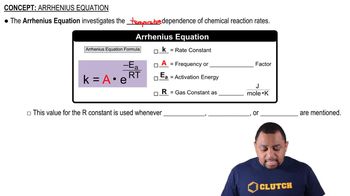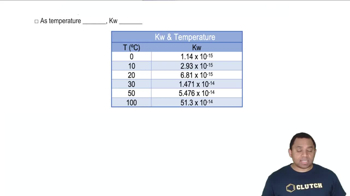Here are the essential concepts you must grasp in order to answer the question correctly.
Arrhenius Equation
The Arrhenius equation describes how the rate constant of a reaction depends on temperature and activation energy. It is expressed as k = A * e^(-Ea/RT), where k is the rate constant, A is the pre-exponential factor, Ea is the activation energy, R is the universal gas constant, and T is the temperature in Kelvin. This relationship indicates that as temperature increases, the rate constant typically increases, reflecting a higher likelihood of overcoming the energy barrier for the reaction.
Recommended video:
Activation Energy (Ea)
Activation energy is the minimum energy required for a chemical reaction to occur. It represents the energy barrier that reactants must overcome to transform into products. A higher activation energy means that fewer molecules have sufficient energy to react at a given temperature, resulting in a slower reaction rate. Activation energy can be calculated using the slope of a plot of ln(k) versus 1/T, which is derived from the Arrhenius equation.
Recommended video:
Temperature Dependence of Reaction Rates
The rate of chemical reactions is significantly influenced by temperature. Generally, as temperature increases, the kinetic energy of molecules also increases, leading to more frequent and effective collisions. This results in an increased reaction rate, which can be quantitatively analyzed using the Arrhenius equation. Understanding this relationship is crucial for calculating activation energy from experimental data, as seen in the provided temperature and rate constant values.
Recommended video:
Kw Temperature Dependence




